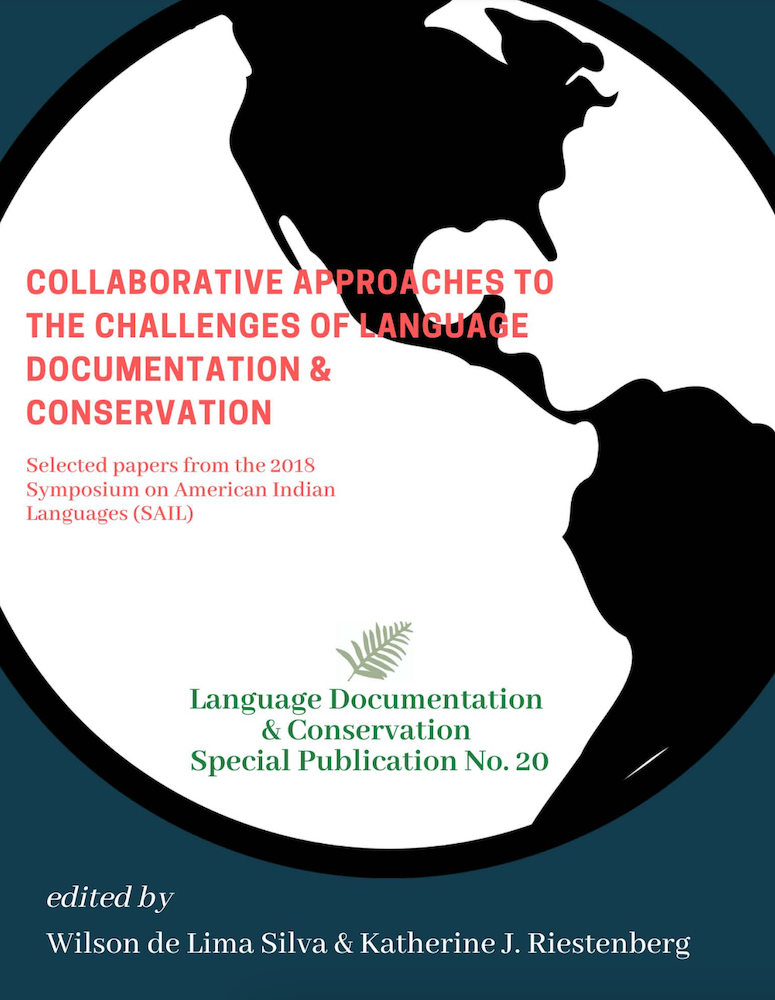Chapters
Introduction: Collaborative approaches to the challenges of language documentation and conservation
Wilson de Lima Silva & Katherine J. Riestenberg, pp. 1-5
Integrating collaboration into the classroom: Connecting community service learning to language documentation training
Kathryn Carreau, Melissa Dane, Kat Klassen, Joanne Mitchell, & Christopher Cox, pp. 6-19
Indigenous Universities and Language Reclamation: Lessons in Balancing Linguistics, L2 Teaching, and Language Frameworks from Blue Quills University
Josh Holden, pp. 20-37
“Data is nice:” Theoretical and pedagogical implications of an Eastern Cherokee corpus
Benjamin Frey, pp. 38-53
The Kawaiwete pedagogical grammar: Linguistic theory, collaborative language documentation, and the production of pedagogical materials
Suzi Lima, pp. 54-72
Supporting rich and meaningful interaction in language teaching for revitalization: Lessons from Macuiltianguis Zapotec
Katherine J. Riestenberg, pp. 73-88
The Online Terminology Forum for East Cree and Innu: A collaborative approach to multi-format terminology development
Laurel Anne Hasler, Marie-Odile Junker, Marguerite MacKenzie, Mimie Neacappo, & Delasie Torkornoo, pp. 89-106
Keeping Haida alive through film and drama
Frederick White, pp. 107-122
A language vitality survey of Macuxi, Wapichana and English in Serra da Lua, Roraima (Brazil)
Vidhya Elango, Isabella Coutinho, & Suzi Lima, pp. 123-151

